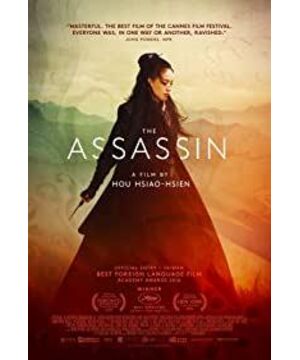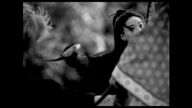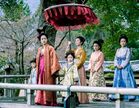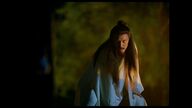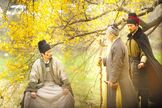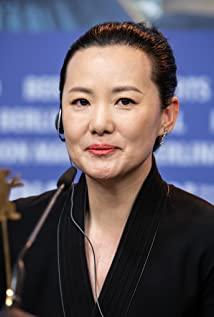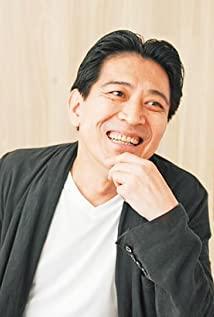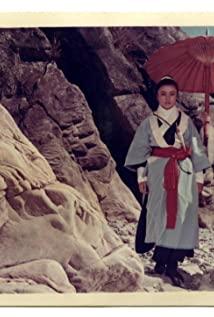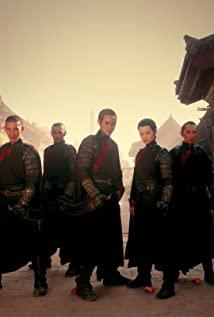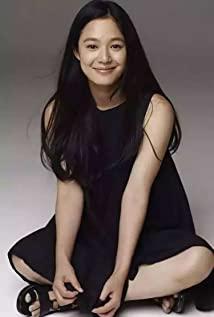This time, the candidate used Alai's film machine for filming, consuming 440,000 feet of film, and finally developing and printing in Japan. The behind-the-scenes team continued to choose: photography director Li Pingbin, editing director Liao Qingsong, sound designer Du Duzhi, artist Huang Wenying, music Lin Qiang, all of them are very skilled and have been working together for decades, so, trust us It will be a very rare movie to see on the big screen this time. Speaking of the origin of the filming of "Nie Yinniang", you must have already known it. We will come to some different footnotes this time to see how Director Hou's film is composed. This article will cover stories, photography, art, editing, music, etc. From the perspective, analyze one by one, cooperate with interviews with each person, and restore "Nie Yinniang" from the perspective closest to the creation.
This article refers to the interview of Taiwan magazine "INK" and Zhu Tianwen's lecture.
1. The image base
"Assassin Nie Yinniang" created by ink painting uses 440,000-foot film, and the frame ratio is 1:1.33. Because Director Hou felt that the relationship between the photographer and the background at 1:1.33 was very good, and it was very concentrated. Before shooting this film, photographer Li Pingbin suggested Fu Baoshi's ink painting to Director Hou. The feeling of people blending together”, but Hou Dao likes to be realistic, and he doesn’t have a special feeling, so it has become a small intention, as a tonal setting.
Hou Dao likes real things. The scenes are all set on location, so the basic lighting is to pursue natural light. The requirement for photography is to fill in some weak light, or when the sky is suddenly dark, use lights to imitate natural light. The pursuit of truth, for the two masters Li Pingbin and Hou Hsiao-hsien, already had a deep measure in their hearts, and the framing frame and the object to be photographed could not limit them at all. "For example, I don't just regard the building as a studio, but also consider the outside of the house, bringing in sunlight to make the space feel penetrating. In fact, the roof is still under construction, but this adds a sense of hierarchy." Li Pingbin If so.
"People think we often wait there, but this movie actually seldom waits, because time and money are all issues." The Taoist nun stood on the jagged mountain in Shennongjia, Hubei, and the dreamlike fog floated down from the mountain. The good time to start the machine is the result of photographer Li Pingbin and the director who have been observing the changes in the atmosphere nearby, "Working with the director for so long, there will be a tacit understanding, when do you feel the wind, and how will the shadow and light move when the wind comes? It seems like I sensed it in advance, but many times, people and the director are waiting for me to decide when to start the game, so the pressure is very high, and Director Hou has no audition, every time it is a challenge, at that time, Shanfeng's The movement and the play were carried out in one go, and everyone was very excited.”
“For example, in the indoor play of Zhang Zhen and Xie Xinxin, Shu Qi was hiding next to him, but the distance was actually very close. How to convince the audience that the assassin was not there? This is not just production. It can convince the audience of the truth, and through the tulle, the faint light and color and details are revealed, which is a bit like Li Keran's painting style with black and black, and it also shows the character's vision and mood
. The movement of the film depends on the track, and the movement of the track is completely a part of the scene, and it moves according to what is heard and felt, and everything is arranged.
2. Story, take the tip of the iceberg
The biggest difference in "Nie Yinniang" this time is that Hou Hsiao-hsien and the screenwriter spent a lot of time collecting information when making the script. Because Nie Yinniang lived in the Tang Dynasty from the 7th to the 9th century, the adaptation of this Tang legend is very short, only a thousand words. So Hou Daoxian spent a year reading various historical materials, such as Nie Yinniang, her father, Nie Feng, was the Jiedushi envoy of the State of Wei, so they found this person in the Jiedushi envoy to read the relevant history. It seems to be in the cracks, picking out some historical things, so it took a long time to build an iceberg, and in the end it only showed a little bit. As for why it takes so much time to build an iceberg, only to reveal so little in the end? Zhu Tianwen used a sentence: "Actually, like a painter, if he wants to paint a leopard in the jungle, he will first draw a complete leopard, and then add the whole bush. After the trees are covered, the leopard may Only one ear, a tail, or stripes on the feet are exposed. But when you take the entire bush away, the leopard can show up completely. On the contrary, if you don't do the work of making icebergs, when you put If these coverings are removed, an unrecognizable thing will be revealed. Therefore, we must draw the leopard first, and then do the work of "covering.
" " and other classics, the history of social customs from the Southern and Northern Dynasties to the Sui and Tang Dynasties, the formation of the official ranks of the Jiedu envoys, the relationship between the Huhua Han people and the Han people, and the relationship between the envoys sent to the Tang Dynasty and the Tang Dynasty were all sorted out. Zhu Tianwen said, "When you adapt a novel into a movie, the movie must not be faithful to the original. It is a very stupid thing." "Nie Yinniang" has been modified on the basis of the novel. After the modification, "Nie Yinniang" only retains the main characters and Some of the mystical colors, Princess Jiacheng, Princess Jiaxin, Orchid, Tian Xing, the young man who wears the mirror and the old man who collects medicine are all new characters in the movie version. After the change, Nie Yinniang has a more distinct personality. After the change, the line of assassinating Tian Ji'an appeared in the movie. In the original novel, there was no assassination mission that had to be completed.
3. Take the character's personality and energy as the basis for martial arts.
In the era of such developed equipment, it is very easy to shoot beautifully, just like the special effects of Hollywood.
In the words of director Hou Hsiao-hsien, the film "pursues realistic martial arts, based on the character's personality and energy, and also adds some Taoist mysticism."
The martial arts director of "Nie Yinniang" is Dong Wei, whose works include "October Siege" and "Knife", and the action features are also mainly realistic. How to shoot martial arts in a long shot is a very interesting question, because it will very test the professional ability of the actors in martial arts. "The requirement for a long shot must be to fight to the end, but for actors, it is impossible to do it. I teach the actors to practice section by section, so that the shots don't have to be disassembled very broken. In fact, the long shot is just a technical problem." The content of Nie Yinniang's martial arts training in the book is "In the first year, the sword is two feet long, and the blade is as sharp as the blade. , there is no miss, the sword is five inches long, the birds meet, I don’t know where it came from. In the seventh year, the sword is three inches, the thief is in the market in broad daylight, no one can detect it”, is a person with very advanced martial arts, so his movements are very Capable, these are also very beautifully displayed at the beginning of the film.
4. Looking for the Tang Dynasty in reality
"The setting is in Taiwan China Film, another Taiwan scene is in Yilan, and the other is the mainland, Japan, Kyoto, and Nara. In Japan, because there are many Tang buildings preserved, the first Tang building is Horyu Temple. Actually, it was built in the Sui Dynasty, and there is also the Tang Zhaoti Temple, which was built by the monk Jianzhen and his craftsmen."
The scenes in the mainland include Wudang Mountain in Hubei Province and Shennongjia, which is where Master Nie Yinniang walked down from the top of the mountain. , as well as Dajiu Lake, Lichuan, Suizhou Ginkgo Valley, Inner Mongolia Hongshan Army Horse Farm and the birch forest where Jingjinger fought, Hebei Zhuozhou Studio This is the place where Tian Ji'an and Nie Yinniang fought on the roof, Nie Yinniang's scene of saving her father was in Yilan, Taiwan It was filmed, and the opening scene was in Dajiu Lake.”
5. Editing: never get tired of seeing it
. “The more drama, the less space there is for one’s personality. The editing is like poetry, and the expressive technique is more expressive. The tension is closed before the most open, and the most Use after opening. If you sit for a long time and become specialized in one thing, you will become a craftsman. Some people will gradually lose their feelings and enthusiasm. How to become a craftsman and maintain artistry requires reading more books and watching movies to cultivate your own vision. Hou Hsiao-hsien said.
Editing starts with the two mules in the opening scene of the movie every day. The director's editing secret is: never get tired of watching it. In the process of watching a thousand times, the director will gradually repair each editing point to be fresh and refreshing. Hou Dao often said, to feel, to watch the play with heart, and to cut along the emotions, the rhythm is very important.
The technical interpretation of "Assassin Nie Yinniang", talk about how a classic movie is composed
6. Restoring the Tang Dynasty Hu Xuan dance music
"Nie Yinniang" has two kinds of soundtracks, the traditional soundtrack (there is no plot, it is purely expressed in the film), this is naturally not a pop music in "Nie Yinniang" to push the film in the movie Emotional tool. Most of these appearances are untraceable and sometimes easily mistaken for part of the sound effect. Although the sounds of traditional musical instruments can be heard, they are actually taken from the pieces played by the musicians, and then processed by Lin Qiang's electronic soundtrack sampling to impose an electronic feel. Another soundtrack is the music that actually appears in the scene. Today, no one has really heard the music of the Tang Dynasty Hu Xuanwu, and the musical instruments of the past are no longer available. Even if the model is restored, no one can play it. In the end, Lin Qiang invited the Balkan music style "Aashti Pan-Silk Road". The orchestra arranges and performs, experimenting with various playing methods with contemporary instruments, groping to create lost timbres.
During the long-term cooperation, Hou Hsiao-hsien and Lin Qiang have developed a deep tacit understanding, but Hou's working methods will change every time, and the soundtracking method will also be different each time. "Assassin Nie Yinniang" is the first editing and finishing film. It is up to Lin Qiang to determine how to change the soundtrack, and finally Hou Dao further cut it down. This way, the image structure and background of "Nie Yinniang" are completed by the scene itself. The soundtrack will not be the key to promoting the dramatic tension, but a foil and subtlety. Ambience.
In addition to admiring director Hou Hsiao-hsien, we are still very clear in our hearts that the possibility of a film with thinking as its priority is slim to survive in the film market. There are two ways to survive inside and outside the system, one is parasitism and the other is symbiosis. Hou Hsiao-hsien redefined martial arts films in his way. This may not be a perfect film, but after many years, looking back , which will definitely be a very important work in his creative career.
View more about The Assassin reviews


